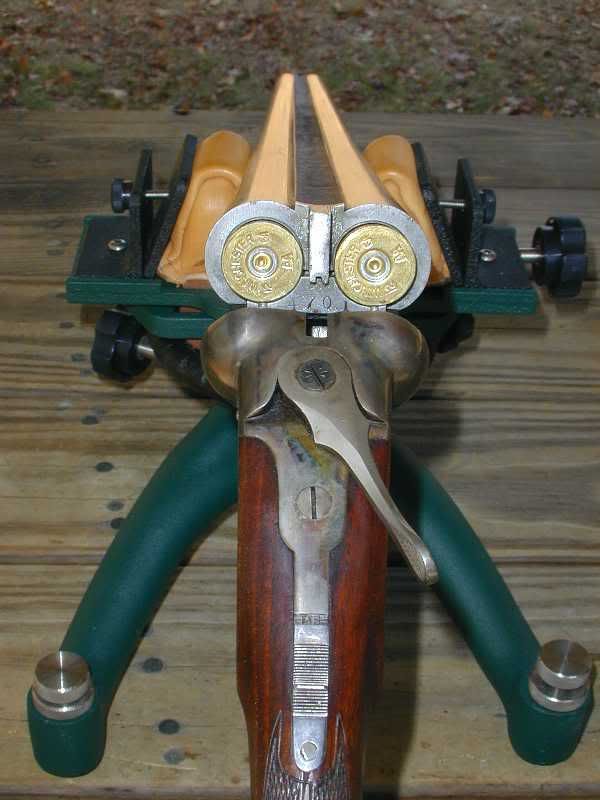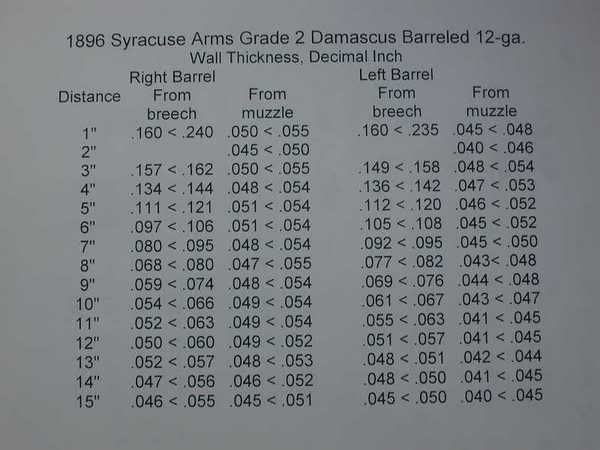"Beefy and good condition", as Lowell notes, factors into any evaluation other than the whistling past the graveyard sort. Below is the breech end of a SAC Hollenbeck. I think anyone who has tossed around a few damascus doubles will agree that the wall section looks robust and the fairness of the barrel exteriors in raking light suggests an absence of impact dents.

Below are the wall thickness nos. for the Hollenbeck. I believe they suggest some surplus material and wgt. in these barrels and an overbuild from both an engineered safety and certainly from an upland gunning point of view. The interior of bores are also unblemished by pitting or corrosion rings in chambers. I suspect that they have never been honed. I have what I think is a reasonable expectation they will be capable of shooting 1 oz. loads with modest charges of smokeless powder long after I have the desire to do so.

I also have Lefever FE with a less than reassuring average wall thickness of .085" ahead of chamber both barrels and honed to minimize the "stress riser" factor of considerable pitting. Lighter barrels, higher comb. A greater pleasure to shoot and the results in the hits/misses column are better for me with this gun than with the Hollenbeck. Am I on the edge of a bit soft whistling with this one? I believe so. I have shot one round of skeet with smokeless reloads, one round 68 gr. bp reloads in a plastic hull. I shot by myself early on Sunday morning; the puller was as far from me as the cord and hearing would allow.
If you decide to trust your left hand, brain and eyesight to damascus barrels, consider that you haven't any right to ask others to share the risk. On the other hand, I've shot both the Remmy hammergun and the other Lefever at Millbrook with never a look askance. Maybe we are all crazy as bedbugs!
jack